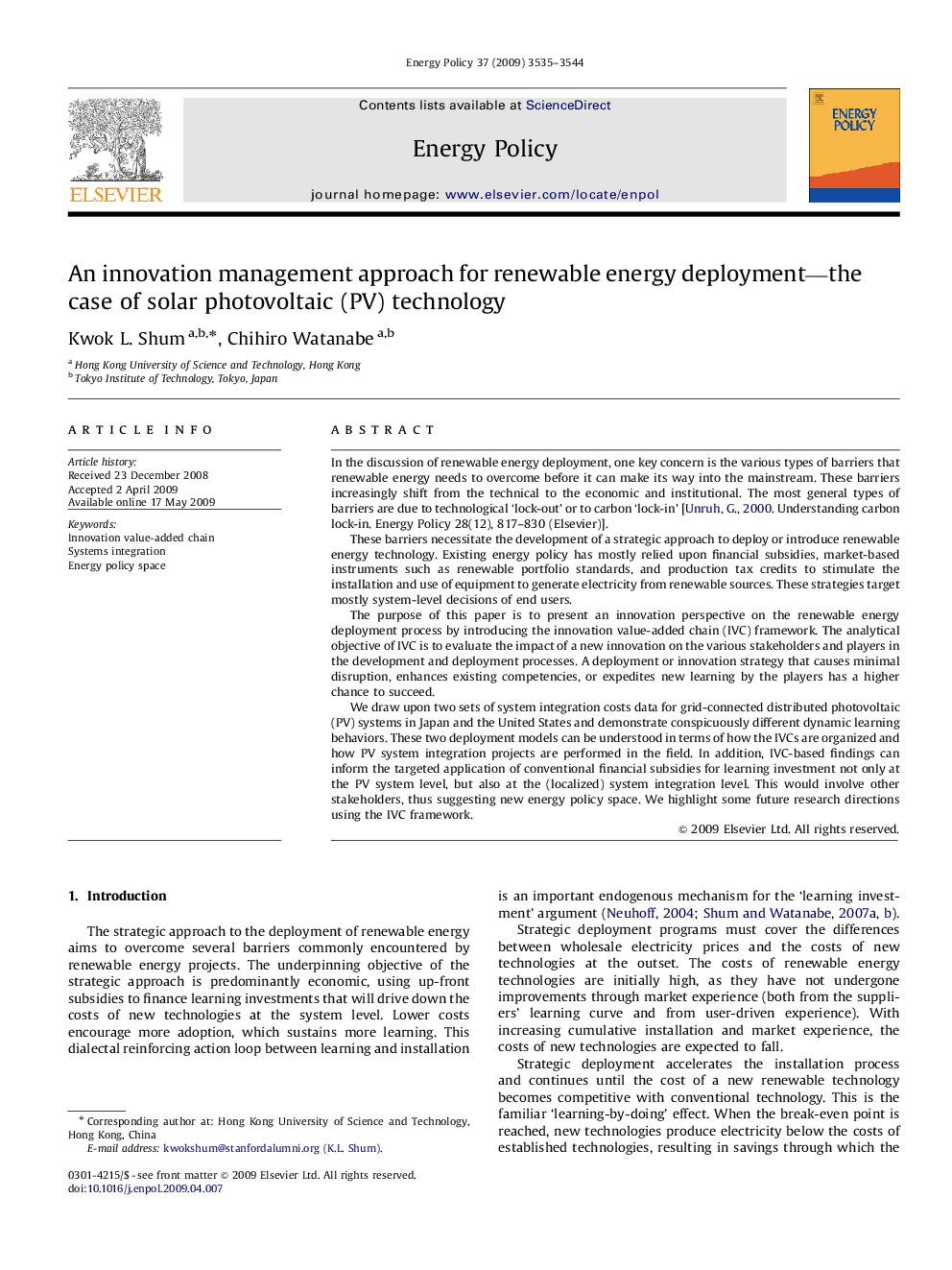| کد مقاله | کد نشریه | سال انتشار | مقاله انگلیسی | نسخه تمام متن |
|---|---|---|---|---|
| 996739 | 936311 | 2009 | 10 صفحه PDF | دانلود رایگان |

In the discussion of renewable energy deployment, one key concern is the various types of barriers that renewable energy needs to overcome before it can make its way into the mainstream. These barriers increasingly shift from the technical to the economic and institutional. The most general types of barriers are due to technological ‘lock-out’ or to carbon ‘lock-in’ [Unruh, G., 2000. Understanding carbon lock-in. Energy Policy 28(12), 817–830 (Elsevier)].These barriers necessitate the development of a strategic approach to deploy or introduce renewable energy technology. Existing energy policy has mostly relied upon financial subsidies, market-based instruments such as renewable portfolio standards, and production tax credits to stimulate the installation and use of equipment to generate electricity from renewable sources. These strategies target mostly system-level decisions of end users.The purpose of this paper is to present an innovation perspective on the renewable energy deployment process by introducing the innovation value-added chain (IVC) framework. The analytical objective of IVC is to evaluate the impact of a new innovation on the various stakeholders and players in the development and deployment processes. A deployment or innovation strategy that causes minimal disruption, enhances existing competencies, or expedites new learning by the players has a higher chance to succeed.We draw upon two sets of system integration costs data for grid-connected distributed photovoltaic (PV) systems in Japan and the United States and demonstrate conspicuously different dynamic learning behaviors. These two deployment models can be understood in terms of how the IVCs are organized and how PV system integration projects are performed in the field. In addition, IVC-based findings can inform the targeted application of conventional financial subsidies for learning investment not only at the PV system level, but also at the (localized) system integration level. This would involve other stakeholders, thus suggesting new energy policy space. We highlight some future research directions using the IVC framework.
Journal: Energy Policy - Volume 37, Issue 9, September 2009, Pages 3535–3544